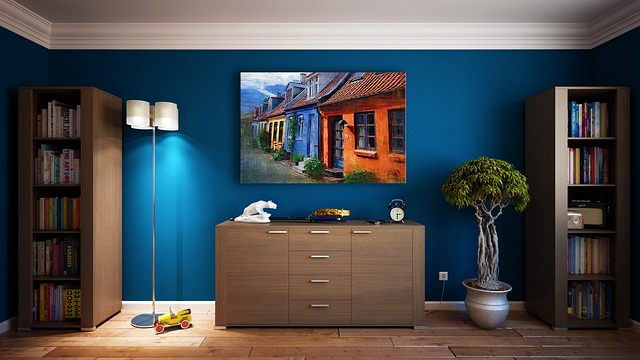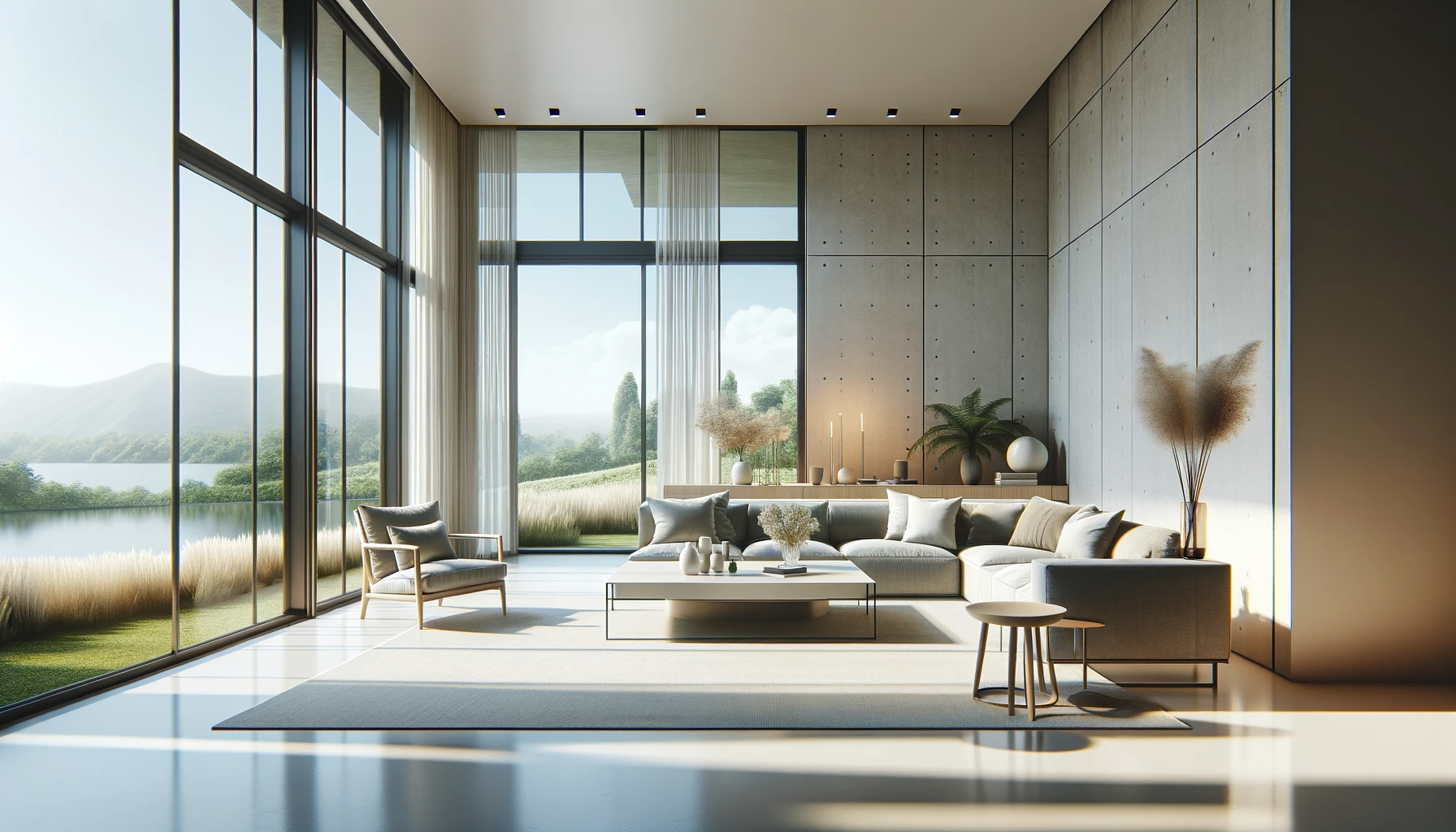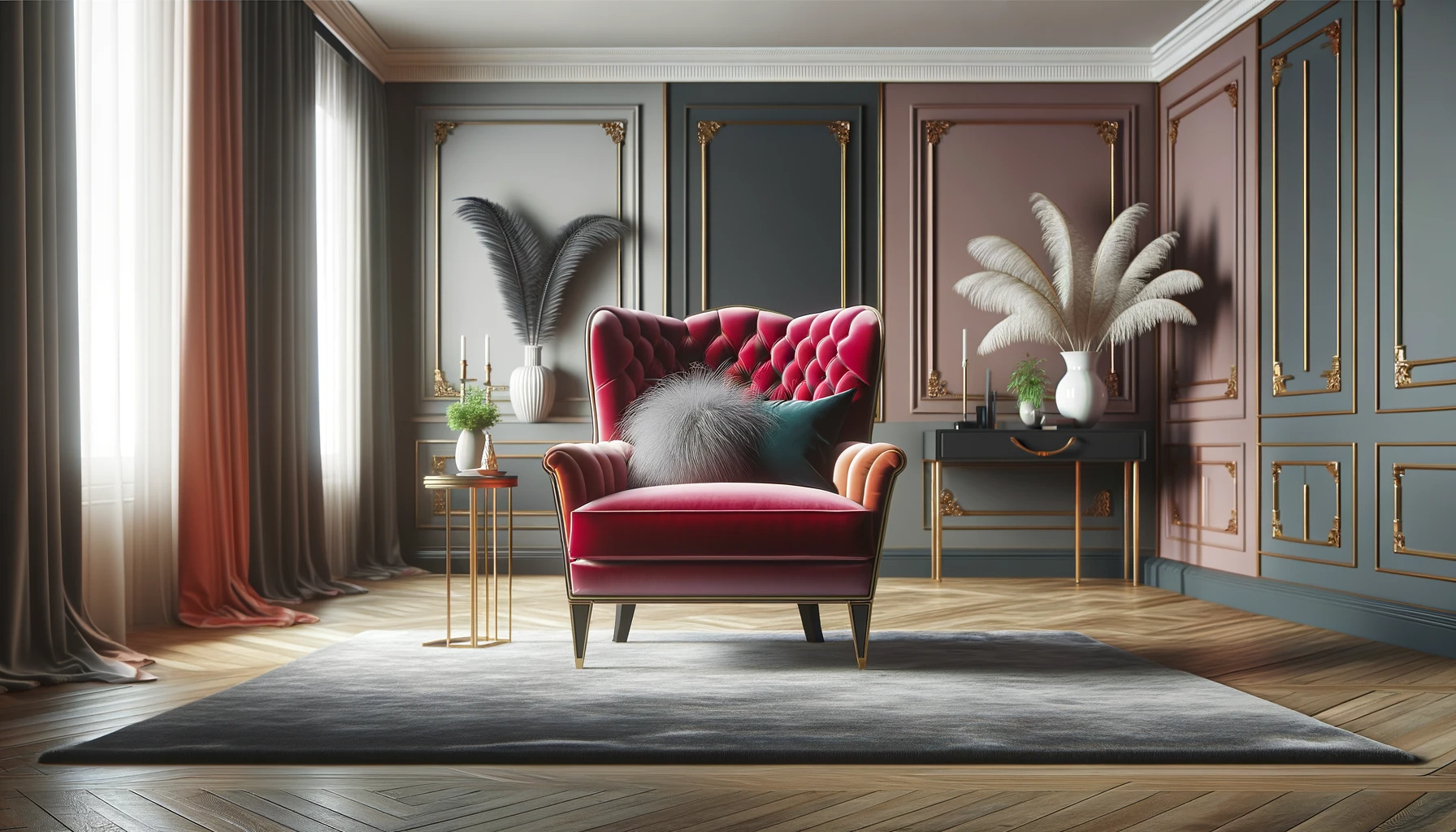Emphasis in interior design plays a pivotal role in shaping the aesthetic and functional appeal of any living space. At its core, it’s about placement emphasis creating a focal point or points within a room that immediately draw the eye and engage the viewer. This technique is not just about decoration; it’s a strategic approach that interior designers use to guide the viewer’s attention and create a sense of order and balance in a space.
The importance of creating a focal point cannot be overstated. A well-defined focal point in a room serves as the anchor of the space, around which all other elements are arranged and balanced. It could be an architectural feature, a piece of furniture, or an art piece – something that stands out and captures interest. When done correctly, a focal point can transform an ordinary room into an extraordinary one, adding depth, character, and elegance.
Focal points in interior design are not just about aesthetics; they are also about creating an intuitive flow within a space. They help in organizing the room’s design and decorations in a way that feels natural and inviting. Whether it’s a grand fireplace in a living room, a striking piece of art in a hallway, or a unique lighting fixture in a dining area, a well-chosen focal point can elevate the overall experience of the space.

Understanding Focal Points and Emphasis
The concept of focal points in interior design is integral to understanding how to create emphasis in interior design. A focal point is essentially the star of a room – it’s the first thing that catches the eye when one enters. This could be anything from a large window with a stunning view, an artwork, a bold piece of furniture, or an architectural feature like a fireplace. These elements serve not just as aesthetic centerpieces but also anchor the room’s overall design, dictating how other elements come together.
But what makes focal points so crucial in interior design? Their primary role is to create visual interest – a magnetic pull that makes a space engaging and dynamic. Focal points break the monotony and add a layer of sophistication to the room. When you walk into a room with a well-defined focal point, your gaze is automatically drawn to it, creating a sense of curiosity and engagement.
Creating emphasis through focal points is a deliberate design choice. It involves understanding the room’s architecture, the flow of space, and how various elements can complement or contrast with each other. For instance, in a minimalist room, a brightly colored chair or a unique sculpture can serve as a focal point, instantly drawing attention and adding vibrancy to the space. Similarly, in a room with rich textures and patterns, a focal point might be a piece with a contrasting style or color, creating a visually appealing balance.
However, creating visual interest goes beyond just selecting an object or feature to serve as a focal point. It’s about understanding how this element interacts with the rest of the room. This interaction creates a visual hierarchy, guiding the viewer’s eyes through the space in a way that is both intuitive and deliberate. For example, a large painting on a wall might be the primary focal point in empty space, but the way lighting is used to highlight it, or the arrangement of furniture around it, contributes to how the emphasis is established and perceived.

Principles of Creating Focal Points and Visual Interest
Mastering the art of arranging elements and creating focal points in a room is essential for any interior designer aiming to establish visual interest and a sense of order. This process involves a careful blend of design principles, creativity, and an understanding of how various elements interact within a space.
Strategies for Creating Focal Points in a Room
The first step in establishing a focal point is identifying the right element or feature that can naturally draw attention. This could be anything from an architectural detail, such as a unique fireplace or an elegant archway, to a statement piece of furniture or artwork. The key is to choose something that is not only visually striking but also resonates with the room’s overall theme and purpose.
Techniques to Create Visual Hierarchy and Balance
Once a focal point is established, the next step is to create a visual hierarchy around it. This involves arranging furniture and other elements in the room in a way that complements the focal point, rather than competing with it. For instance, in a living room with a large painting as the focal point, the furniture can be arranged to face it, and lighting can be used to highlight it, creating a balanced look that invites the eye to move naturally through the space.
Role of Architectural Features and Details in Establishing Emphasis
Architectural features often serve as natural focal points due to their inherent structures. A large window with a stunning view, an ornate ceiling, or a grand staircase can all serve as focal points. Enhancing these design features with strategic design elements like color, texture, or lighting can further establish their emphasis in a room. For instance, painting the wall around a large window a contrasting color can draw more attention to the view outside.
Creating focal points and visual interest is not just about the visual appeal; it’s about creating an environment that feels balanced and cohesive. It requires a thoughtful consideration of how different elements, from furniture and decor to color and lighting, work together to create a space that is not only beautiful but also functional and inviting.

Key Elements in Interior Design Emphasis
Creating emphasis in interior design is an art that revolves around the strategic use of key elements. These elements work in unison to establish emphasis, draw attention, create a focal point, and establish a visual hierarchy that guides the viewer’s eye through the space effortlessly.
Incorporating Design Elements to Achieve Emphasis
The choice of design elements plays a crucial role in establishing emphasis. These elements include color, texture, pattern, and form. For example, a brightly colored accent chair in a neutral room immediately draws attention, creating a clear focal point. Similarly, a textured accent wall can add depth and interest, making it a natural center of attention. The key is to use these elements thoughtfully and intentionally to create a focal point that feels organic and cohesive within the room’s overall design.
Using Visual Weight and Hierarchy to Draw Attention
Visual weight refers to the perceived heaviness or lightness of an object, influenced by its size, color, and texture. Larger, darker, or more textured items tend to have more visual weight. By understanding and manipulating visual weight, designers can create a visual hierarchy that naturally draws the eye to the focal point. For instance, a large, dark-toned bookshelf can serve as a strong focal point in a room, with lighter elements around it providing balance.
The Importance of Placement and Architectural Elements in Emphasis
The placement of furniture and decor plays a pivotal role in emphasizing a focal point. Strategic furniture placement alone can enhance the room’s flow and highlight the focal point. Architectural elements like columns, beams, or built-in bookcases can also serve as natural focal points. Enhancing these elements with lighting or contrasting color can further establish their prominence in the space.
Designing with emphasis is about more than just aesthetics; it’s about creating a sense of harmony and balance. By skillfully incorporating design elements, incorporating emphasis, understanding visual weight, and strategically placing furniture and architectural features, interior designers can create spaces that are not only visually appealing but also emotionally resonant and functionally effective.
Specific Applications in Room Design
Applying the principles of emphasis in interior design requires a practical understanding of how to use specific elements to achieve balance, in various room settings. This section explores how focal points can be created and emphasized in different types of rooms, using key design elements.
Creating a Focal Point with a Dining Table or Coffee Table
In dining rooms, the dining table often naturally serves as the focal point. A round dining table, for instance, can create a sense of intimacy and draw people together, serving both a functional and aesthetic purpose. Enhancing this focal point can be achieved through overhead lighting, such as a statement pendant light, or a striking centerpiece. In living rooms, a coffee table can serve a similar purpose, especially when it’s unique in design or color, drawing attention and anchoring the seating arrangement around it.
Utilizing a Textured Accent Wall to Highlight Specific Elements
Accent walls have become a popular way to create a focal point in a room. A textured accent wall, whether it’s with wallpaper, wood, stone, or another material, can add depth and character to a space. This design feature not only draws the eye but can also be used to highlight other key elements in the room, such as artwork, shelves, or a particular piece of furniture.
Designing with Key Elements like Round Dining Tables for Visual Flow
The shape and placement of furniture can significantly influence the flow and feel of a room. A round dining table, for instance, can create a smoother flow, guiding the eye and movement around the space more fluidly than a rectangular table. This design principle can be applied to other room types as well, where the selection and arrangement of furniture contribute to the overall visual and functional flow of the space.
In each of these examples, the focus is on creating a central point of interest that not only captures attention but also enhances the overall functionality smooth flow and aesthetic of the room. Whether it’s through a piece of furniture, an architectural feature, or a distinct design element, these focal points play a crucial role in creating a balanced and harmonious space.
Color, Texture, and Lighting in Emphasis
The strategic use of color, texture, and lighting is pivotal in creating emphasis memorable character in interior design. These elements, when used correctly, can dramatically alter the mood, feel, and focal points of a space.
The Impact of Contrasting Colors and Textures in Creating Focal Points
Color and texture are powerful tools in the designer’s arsenal. Contrasting colors can create dynamic focal points that attract attention in a room. For example, a bright color in a predominantly neutral room instantly draws the eye. Texture adds another layer of interest; a smooth, shiny surface will stand out in a room filled with matte, rough textures, and vice versa. The interplay of different textures can create a tactile experience that adds depth and character to the space.
Strategic Lighting Techniques, Including Layered and Accent Lighting
Lighting is another critical element in establishing emphasis. Strategic lighting can enhance the room’s focal point, whether it’s illuminating a piece of art, casting a warm glow over a dining table, or highlighting an architectural feature. Layered lighting – combining ambient, task, and accent lighting – can create a rich and varied lighting scheme that enhances the overall aesthetic of a room. Accent lighting, in particular, is useful for drawing attention to specific areas or objects.
The Role of Negative Space and Smooth Surfaces in Maintaining Balance
In the pursuit of creating emphasis, the role of negative space – the empty or open spaces around and between elements – is often overlooked. Negative space gives the eye a place to rest and helps to maintain balance through out more visually heavy elements. Similarly, smooth surfaces can provide a visual break in a room filled with busy patterns or textures, contributing to a balanced and harmonious design.
By thoughtfully integrating color, texture, and lighting, designers can create spaces that are not only visually appealing but also emotionally resonant. These elements work together to establish focal points, show contrast emphasis create a sense of balance, and enhance the overall appeal of the room.
Multiple Focal Points and Maintaining Harmony
Managing Multiple Focal Points Without Creating Visual Chaos
In larger or open-plan spaces, it’s possible to have multiple focal points. For example, a living room might have a fireplace, a large window with a view, and an artwork as distinct focal points. The challenge here is to ensure these focal points coexist without competing for attention. This can be achieved through careful arrangement and balancing of elements, ensuring that each focal point is given its due space and significance without overwhelming the others.
Achieving Balance and a Harmonious Space with Different Elements
The key to a harmonious space with multiple focal points lies in balance. This involves playing with symmetry and asymmetry, color coordination, and the strategic use of negative space. For instance, if one focal point on gallery wall is visually heavy, others can be more subdued. The aim is to create a space where the eye moves naturally between these points, creating a sense of dynamic equilibrium.
Maintaining Harmony Through Clean Lines and Neutral Room Themes
Clean lines and a neutral palette can be instrumental in tying together multiple focal points. They provide a calm backdrop against which architectural details and the focal points can stand out without causing visual clutter. Neutral themes also allow for easier transitions between different areas in an open-plan space, maintaining a cohesive look throughout.